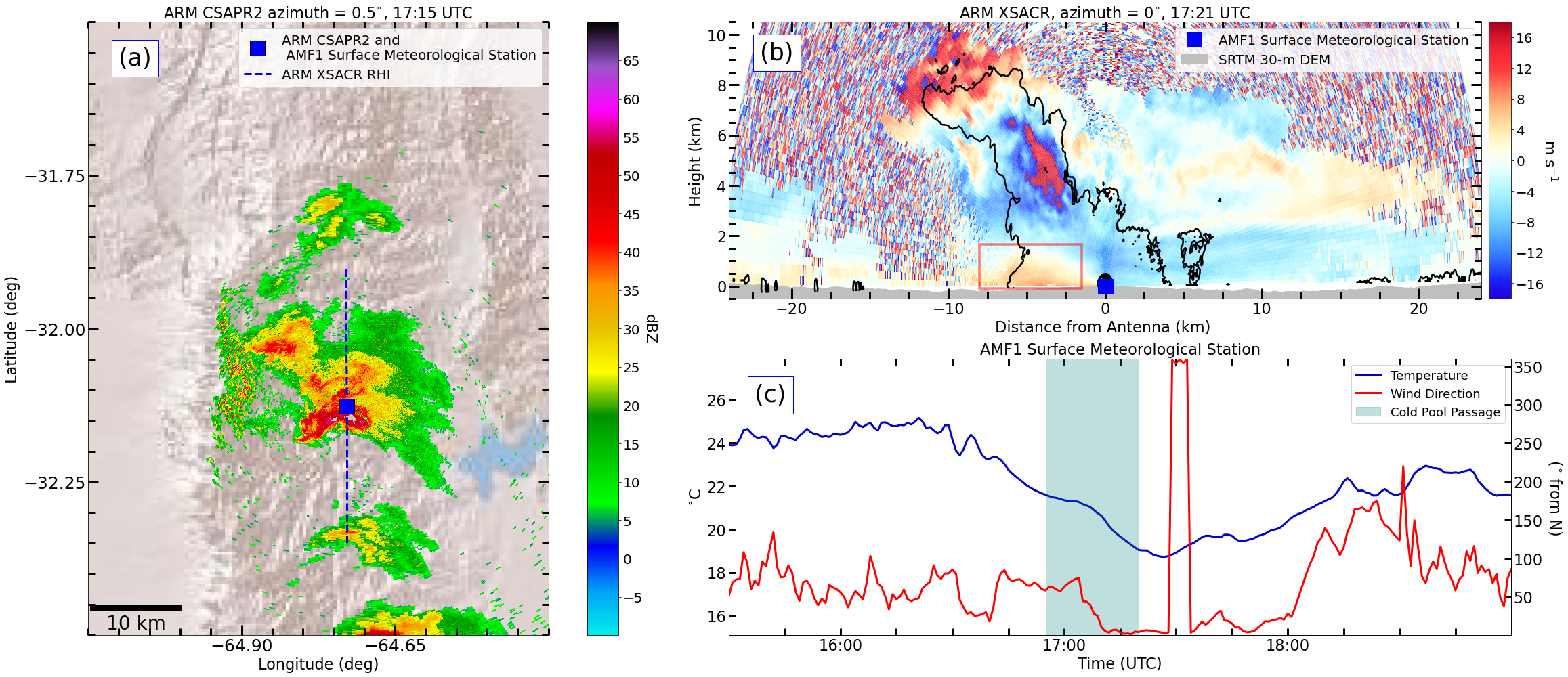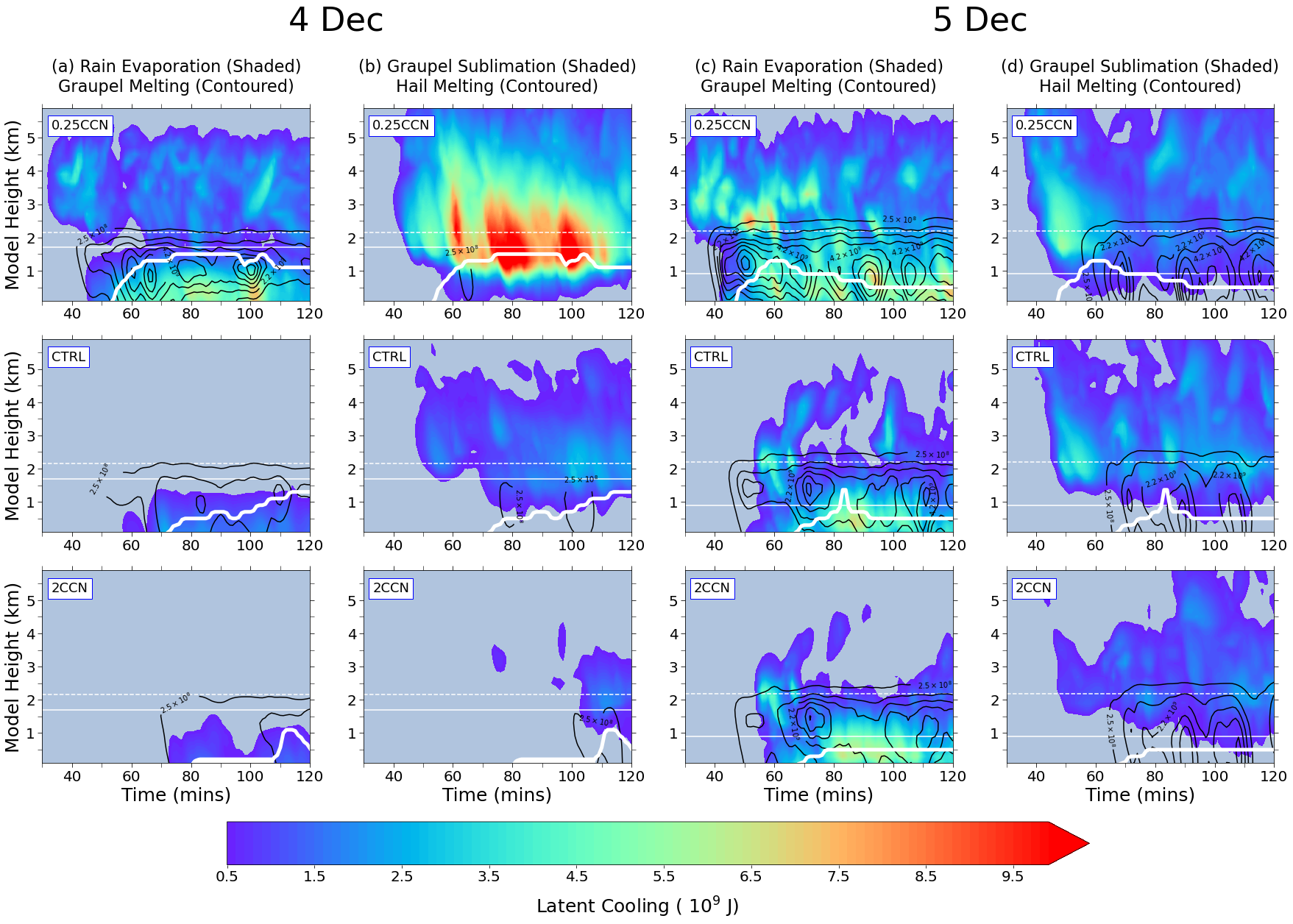On CCN effects upon convective cold pool timing and features
Submitter:
Lasher-Trapp, Sonia — University of Illinois at Urbana-Champaign
Area of research:
Cloud-Aerosol-Precipitation Interactions
Journal Reference:
Science
Field observations, and numerical modeling based on those observations, suggest that environments with more CCN can delay and weaken the first precipitation, and thus the first cold pools, produced by ordinary thunderstorms. Supercell thunderstorms appear to be less susceptible to these CCN effects.
Impact
Based on the results of this study, consideration of the impact of CCN in cold pool parameterizations appears warranted, especially in environments where supercell thunderstorms are not favored.
Summary
Data sets obtained from the CACTI/RELAMPAGO field campaigns in Argentina, along with idealized numerical modeling, were used to investigate the hypothesis. Aircraft observations of CCN and shallow convection on nine days during CACTI did suggest that drizzle formation was delayed on days with more environmental CCN. Three of those cases later developed into deep convection, and CACTI/RELAMPAGO radar data and ground-based measurements were used to estimate the timing of the first appearance of their respective cold pools. Two of the three cases were ordinary thunderstorms and seemed to imply a delay in the timing of the cold pool in environments with more CCN. Idealized numerical simulations of one of these storms also suggested weaker, slower-moving, and shallower cold pools in higher CCN environments. The third observed case was a supercell thunderstorm that did not follow the expected trend. Idealized simulations of the supercell case suggest that CCN effects on its precipitation and cold pool can be easily overpowered by its unique dynamics.



